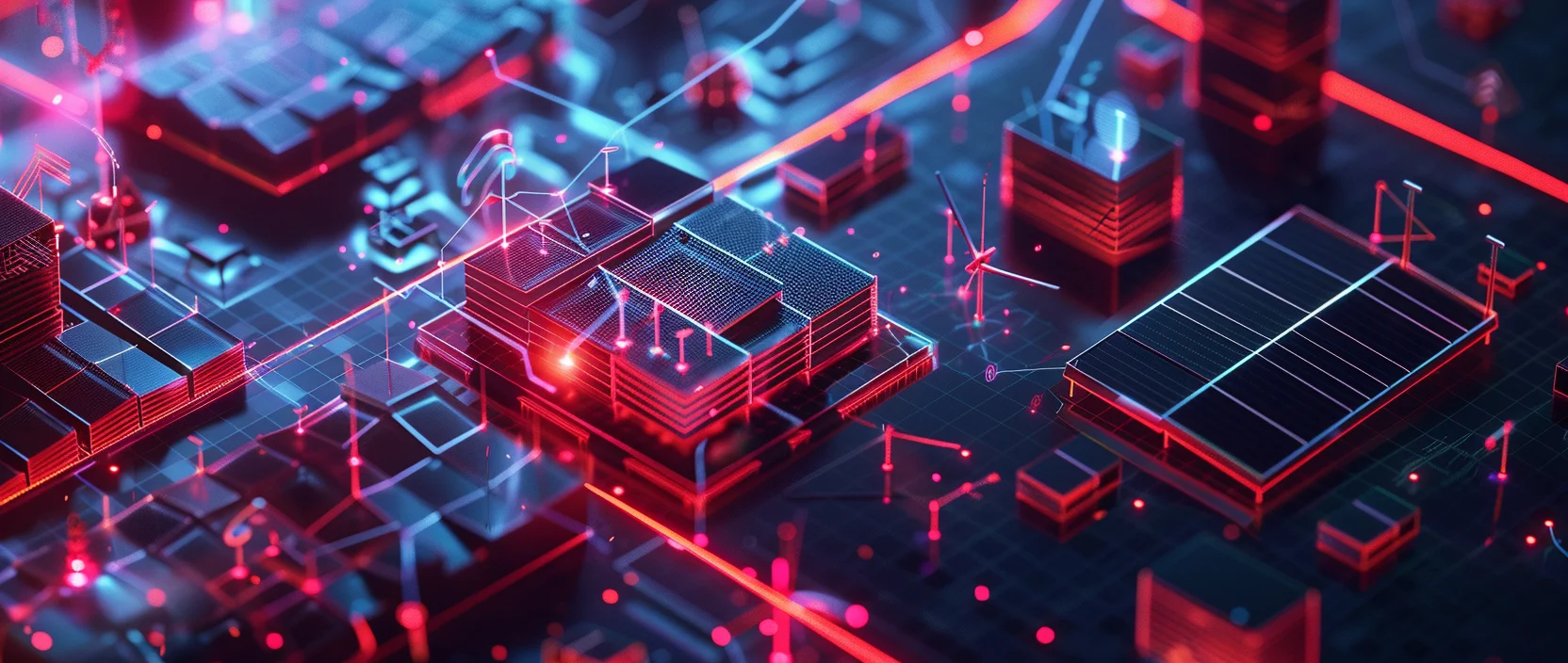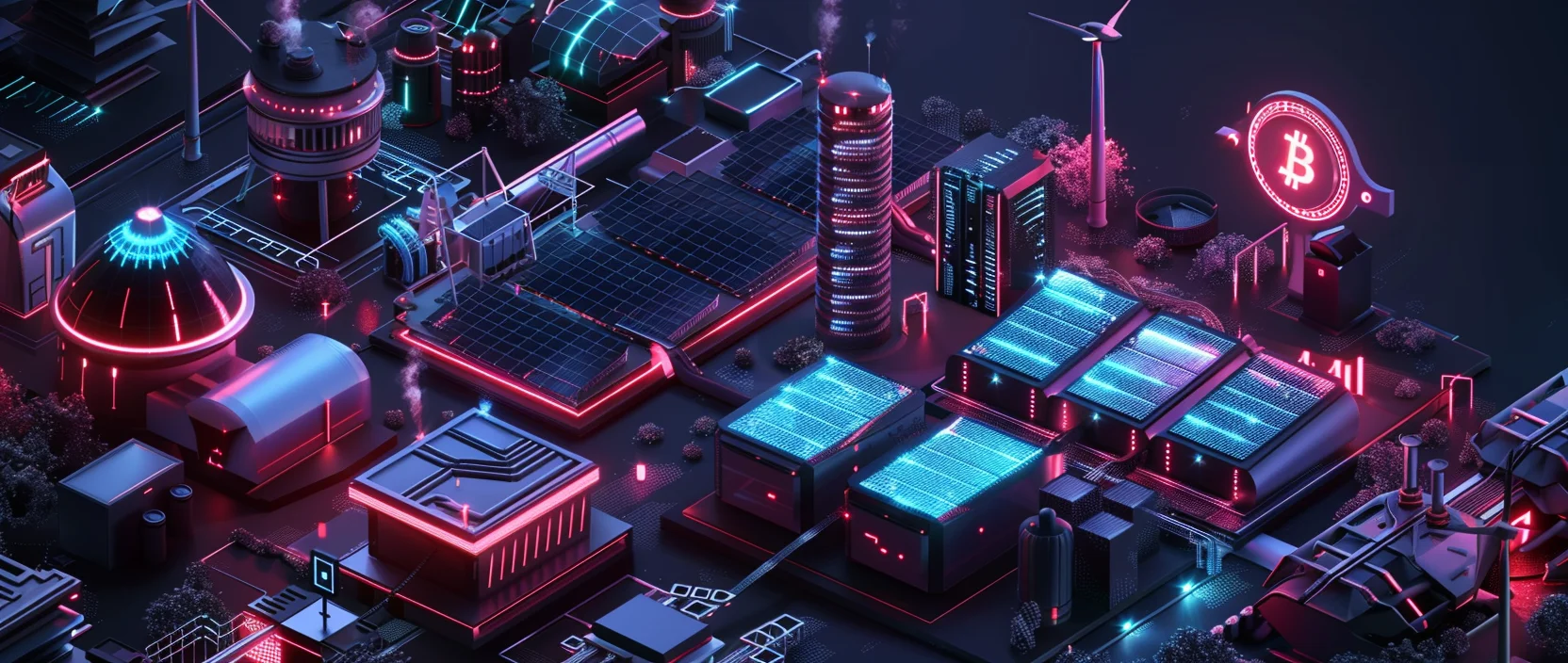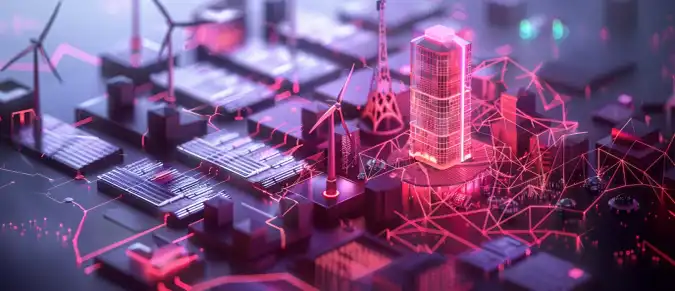In today’s world, renewable energy sources are becoming increasingly popular. However, their intermittent nature often leads to energy overproduction that remains unused. Soluna offers an innovative solution to this issue by integrating modular data centers directly at renewable energy generation sites. These centers utilize excess energy to perform resource-intensive computational tasks, such as artificial intelligence processing and cryptocurrency mining, thereby improving the efficiency of renewable energy use and contributing to sustainable technological development.
Contents
- Introduction
- When There’s Too Much Energy: The Paradox of Renewables
- Soluna’s Solution
- Smart Compute Powered by Clean Energy
- Conclusion

1. Introduction
In the context of a global shift toward sustainable development and decarbonization, renewable energy sources play a crucial role. However, around 30% of solar and wind energy is lost due to a mismatch between generation and consumption. This reduces the overall efficiency and profitability of green energy projects.
Soluna offers an innovative solution — placing Modular Data Centers directly at generation sites. These centers utilize excess energy during times when the grid cannot absorb it, converting it into valuable computation for artificial intelligence, blockchain, and scientific simulations. This approach not only reduces energy losses but also increases the return on renewable energy investments, helping build a sustainable digital infrastructure.
2. When There’s Too Much Energy: The Paradox of Renewables
One of the key challenges holding back widespread adoption of renewable energy (RE) is its intermittent nature. Solar and wind power plants generate electricity depending on weather conditions and time of day, while energy consumption in the grid remains inconsistent, albeit predictable. This often leads to situations where the generated energy cannot be immediately used or stored, especially during periods of low demand or infrastructure overload.
As a result:
| Issue | Consequence |
|---|---|
| Power plants are forced to shut down | Loss of generation capacity |
| Underdelivery or curtailment of energy | Grid operators incur financial losses |
| Inefficient generation | Public and private investors lose profits |
| Intermittency of renewables | Lower competitiveness compared to traditional energy sources |
| Unused "clean" energy remains unutilized | Reduced environmental benefit — fossil fuels are not offset |
This paradox threatens not only the economics of individual projects but the overall strategy for the energy transition to a low-carbon future. Solving this problem requires infrastructure capable of efficiently absorbing and utilizing excess energy — and that’s where Soluna’s approach comes into play.
3. Soluna’s Solution
Soluna proposes an innovative way to solve the problem of excess energy at renewable generation facilities. The company installs modular data centers directly at solar and wind power plants, allowing the use of surplus energy for high-performance computational tasks.
These data centers are specifically designed to function under intermittent power supply and can handle a wide range of tasks such as AI data processing, cryptocurrency mining, rendering, scientific computing, and more. This creates a flexible, scalable infrastructure that can adapt to energy availability in real-time.
Benefits of this model include:
- Reduced energy loss by using excess power during periods when it can’t be delivered to the grid.
- Additional revenue streams for renewable energy operators through monetization of computing power.
- Improved economic efficiency and investment attractiveness of renewable projects through better utilization of capacity.
- Support for high-tech industries including AI, Web3, research, and digital production by providing low-cost sustainable computing resources.
- Lower carbon footprint of digital infrastructure by running workloads on clean energy.
- Formation of a flexible and sustainable energy ecosystem capable of effectively utilizing excess energy.
In this way, Soluna transforms the volatility of renewables into an economic and technological opportunity — bridging green energy with the digital future. Instead of investing in costly storage or accepting inefficiencies, Soluna provides a flexible, scalable, and economically sound solution that synchronizes generation and consumption in real-time.
This is more than just a way to rescue "extra" energy — it’s a step toward a new energy paradigm, where every kilowatt-hour of clean generation is put to maximum use for the economy, environment, and technological progress.

4. Smart Compute Powered by Clean Energy
Soluna’s modular data centers offer a universal and adaptable solution for a wide range of computational needs. Designed to operate on intermittent yet clean energy sources, these centers unlock new opportunities for sustainable computation.
Main areas of application:
- Artificial Intelligence and Machine Learning. Modern AI systems require massive datasets and compute-intensive training, which consumes significant energy. Soluna provides a green alternative by executing these tasks on clean power, reducing both emissions and costs while ensuring the necessary compute power.
- Cryptocurrency Mining. One of the most energy-intensive sectors, crypto mining becomes more sustainable with Soluna. Operating close to renewable sources allows for eco-friendly mining that avoids overloading the grid — especially during times of energy surplus.
- Scientific and Industrial Computing. Climate modeling, bioinformatics, materials simulations, satellite data processing — all demand powerful infrastructure. Soluna’s modular data centers provide scalable, sustainable compute resources for research institutions, enterprises, and academia.
Thanks to their modular design, these centers can be rapidly deployed near new or existing renewable sites and easily scaled — both horizontally (adding modules) and vertically (boosting node capacity). This enables projects of any size — from small pilots to full-scale computing hubs.
Soluna’s technology not only addresses the challenge of excess energy utilization, but also lays the groundwork for a sustainable digital infrastructure that can grow alongside the world’s increasing demand for computing power.
5. Conclusion
Soluna demonstrates an innovative approach to integrating renewable energy with high-performance computing, solving the issue of excess energy while supporting the development of sustainable technologies. Deploying modular data centers at generation sites not only increases the efficiency of renewable resource use, but also unlocks new opportunities for tech-driven industries seeking clean and cost-effective solutions.
This approach establishes a strong connection between energy and the digital economy, enabling both sectors to reach their full potential. Soluna isn’t just removing obstacles on the path to energy transition — it’s laying the foundation for a more resilient and sustainable technological era.



